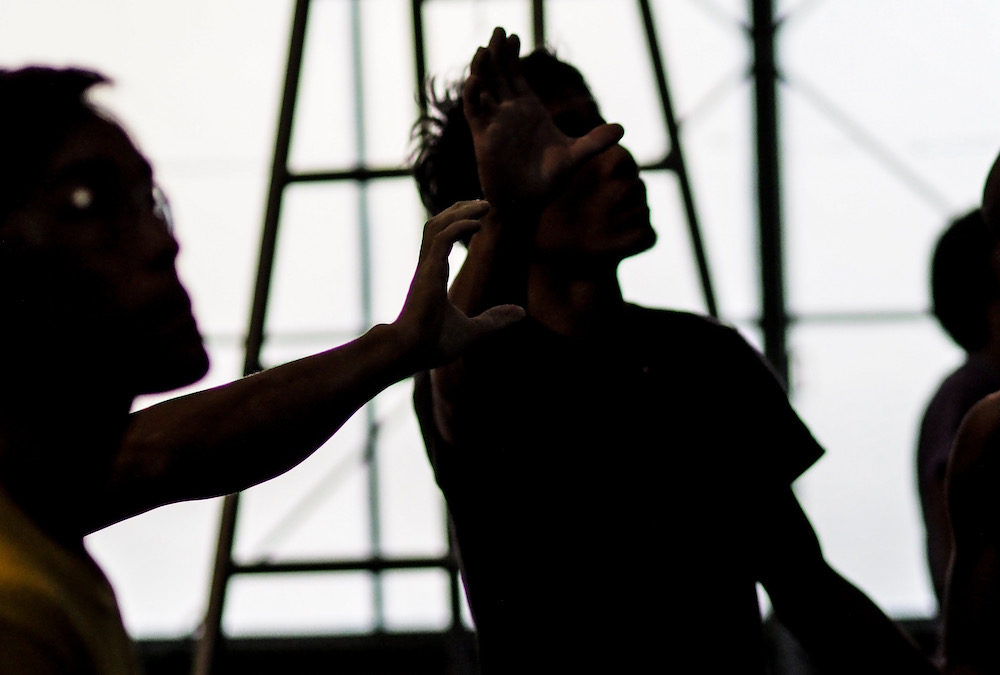Climbing skills, route setting skills, words and common expressions used in discussions, quality of problems or lines, the effect of it, setting environment, training environment, organization – these are all part and parcel of route setting. These elements can’t be measured numerically, so I don’t have a scale at which it can be judged or evaluated in that manner. But, I would like to share my experience and knowledge with as many people as possible to help route setters grow.
Digging Deeper – 2017
There are many factors involved in route setting skill. First, your climbing ability and experience forms the foundation. Then, how you use holds, how you create movement. Management and organization to meet gym requirements, or competition requirements are some other skills you need. Combine that with good teamwork and time management, and you can imagine how difficult it can be sometimes to be a setter of “good” skills.
The innate Japanese character seems to have the ability to dig deeper. We think in detail and digest it while constantly researching better ways. The craftsmanship culture is strong amongst most Japanese. The focus on details, skillfully using tools, controlling the movement of the body – all the focus lies in a single task – route setting. I think that route setting is very much a craftsman’s position. And the “task” that is then set by the route setter greatly depends on how much you have studied and practiced your discipline.
In the process of digging deep and practicing this craftsmanship of route setting, one’s journey on the “right path” begins, and skills develop and can be honed around the world.
The Future of Customers
When I ask route setters “What kind of route setting are you practicing?” – The general answers that I get is “I’m imitating the type of problems from the World Cup and other competitions” or “I got my ideas from real rock climbing”
I wonder if only competition problems and rock problems can make up the entire gym. To put it in another way – many people think that “World Cup style” problems and “Rock” problems are valuable right?
Of course, the ability to make an “in trend” move and knowing the trend is a necessary skill for competition setting. However, the most important thing when setting in a commercial gym is whether you can create a problem for your customers who are in the gym.
In many cases, the gym owner dictates the direction of route setting and the idea of what the customer needs. However, I believe that each route setter should have an individual idea of what problems customer needs. Professionals will seek to introduce the idea, get further feedback, and then imagine the next step they have to take.
As long as each route setter has a specific vision and continues to improve on it, the cultural level of climbing throughout Japan will definitely improve – because customers are influenced by the problems that are set. Globally, route setters are becoming more respected by customers and the influence of the route setters’ opinions on the environment is also growing. If a route setter says to the customer, “This is a great problem, please try it!”, most customers will try. Perhaps the customer might climb a single problem in the gym 100 times. As an extreme analogy – if a World Cup imitation problem needs to be done a certain way that encourages a strange elbow angle, or a rock imitation problem has a lot of harsh crimps – what negative impact will it have on the customers? It’s almost obvious at a glance.
It’s normal for a regular climber to evaluate interesting or boring problems. However, route setters should also evaluate problems from a broader perspective, considering how they will affect customers. You should be careful also in what you say to customers.
I would also like you to think about one more thing.
What did your instructor first explain when you started climbing? Was it that you should extend your arms as much as possible?
Now, is the problem that you’re trying now one that you can climb with your arms straight? Surely, it’s different. Is there a rock climb that you can climb with your arms extended? It would be like walking with your legs straight. I often observe climbers who are trying to keep their arm straight, those who generally believe in the early instruction blindly. Is this an unfortunate situation?
Still, there is a way – a way to solve it without actually talking to the climber and saying that the climbing form has a negative effect on the body. That way is route setting.
If you need to bend and stretch your arms firmly on each move, you naturally learn the movement. Of course, it’s not just the arms. Arms is just a tiny part of whole body. In an environment where problems that are prepared require more correct climbing motion, the movement of the customers will inevitably be corrected and overall skill and physical strength will improve. Of course, good instruction is necessary at the same time, but if the problems are low quality (Actually, what is high quality problems? Food for thought), good instruction is impossible.
Our route setting will determine the future of our customers. The future of Japanese climbing rests on your problems. There is no time to imitate problems from competitions or from rock. I want you to be able to think clearly about what is the best problem for you and your customers right now, and express it through the walls, holds and moves.
In order to do so, it is necessary to dig deeper, day and night.

